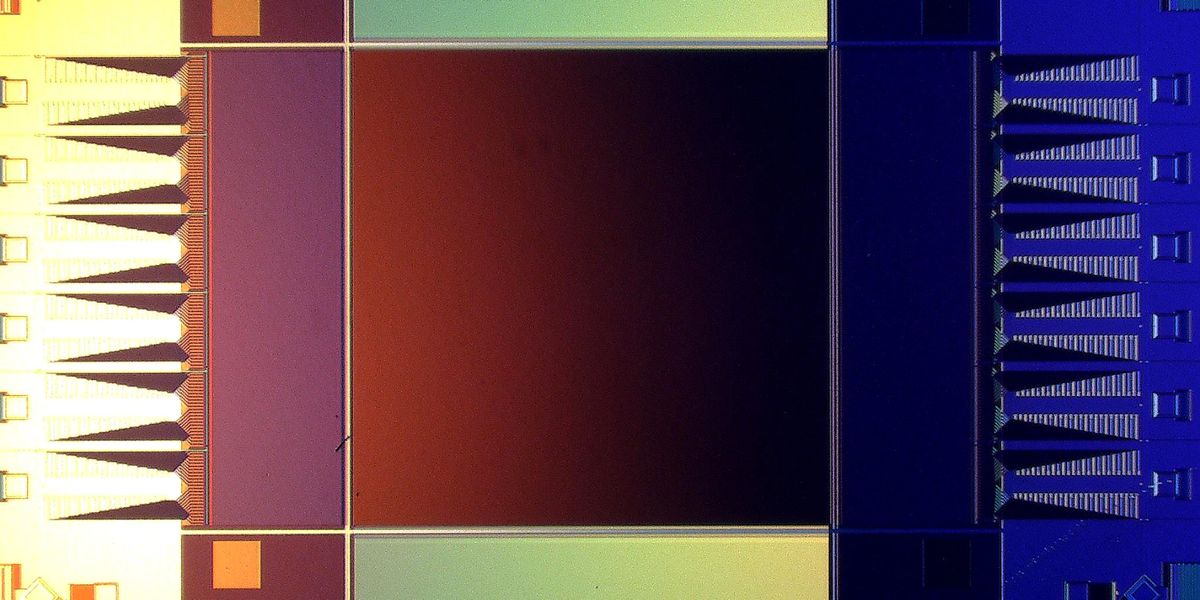At Last, Single-Photon Cameras Could Peer Into Your Brain

Superconductor-based cameras that can detect a single photon-the smallest smidgeon of light-have existed for 20 years, but they've remained confined to laboratories due to the inability to scale them past a few pixels. Now, a team at the National Institute of Standards and Technology (NIST) in Boulder, Colo., has created a 0.4-megapixel single-photon camera-400 times as large as the previous biggest camera of its type. They reported their results in a preprint they submitted to arXiv on 15 June.
Single-photon cameras, made of superconducting nanowires, measure light with unrivaled sensitivity and speed, and across an unmatched frequency range. With the leap in size, the single-photon camera is poised to transition from a lab curiosity to an industrial technology. Such cameras could find a home imaging the cosmos on the next James Webb-type telescope, measuring light in photonic quantum computers and communications, and peering into the brain with noninvasive light-based techniques.
From a scientific perspective, this is definitely opening a new avenue in optical brain imaging," says Stefan Carp, an associate professor of radiology at the Harvard Medical School who was not involved in the work. Other approaches for optically mapping cortical brain flow may have lower costs, but they all have shortcomings impacting signal quality that often require complex signal processing. There is no compromise with nanowires from a performance perspective."
Superconducting nanowire detectors can capture almost every photon, work at visible, ultraviolet, and infrared frequencies, and spit out results in mere picoseconds for high frame-rate detection. The detectors' sensitivity stems from the fact that a high enough electrical current running through a superconductor will destroy its superconducting properties. Each pixel of the camera is a superconducting wire with a current set just below the threshold, so that a single photon colliding with the wire will break its superconductivity. The break results in increased resistance across the wire, which can be detected almost immediately.
The Secret to Scaling Up Single-Photon CamerasThe performance of a single pixel is stellar, but putting many of them close to one another on a single chip has been a long-standing challenge. To achieve superconductivity, the device has to be cooled to cryogenic temperatures, and wiring up many pixels into the cooling system is prohibitive. I certainly can't put a million wires into my cryostat," says Adam McCaughan, a staff physicist at the NIST who led the effort. It would be an obscene amount of engineering to make happen, much less read it out."
To overcome these difficulties, the team drew inspiration from other detector technologies. They borrowed the idea of a common read-out bus, collecting detector information from an entire row or column of pixels at a time. However, a straightforward application of the bus introduced cross talk between the pixels that destroyed the device's sensitivity. The problem with the usual way readout buses are made is that they're symmetric-anything that can go out can come in," McCaughan says. So we thought, How can we couple the detector to the bus in an asymmetric way?'"
The key was figuring out the asymmetric scheme in which the signal from a detector would be transferred to the bus, but not vice versa. For this, the team designed an intermediate step next to each detecting pixel, in which they wired a heating element in parallel with the superconducting nanowire. A photon hitting the nanowire would break superconductivity and deflect the current into the heating element. The heating element would then heat up naturally and in turn break superconductivity locally on the bus, which is also made of superconducting wire. This would not disturb adjacent heating elements, creating the desired asymmetric coupling.
Bigger Cameras Could Lead to Practical UsesThis design proved extremely fruitful. After the fabrication process was optimized, I remember Bakhrom kept coming and telling me, Hey, Adam, I think I got the 2000-pixel camera working,' " says McCaughan, referring to lead author Bakhrom Oripov. And then a week later he comes back and tells me, I got the 8000-pixel one working.' Then I got the 40,000-pixel one.' It just kept going up and up and up and up and up."
The huge size improvement opens up many applications, particularly in biomedical imaging. For example, scientists such as Carp and Roarke Horstmeyer, an assistant professor of biomedical imaging at Duke University, are developing techniques to image the brain by shining light into it and detecting the tiny amounts of light that scatter back out. The grand vision is making a portable MRI," Horstmeyer says.
For shining light into human tissue, near-infrared frequencies are ideal. They can penetrate deeper into the tissue and are less destructive, allowing for higher intensities. Commercially available silicon-based detectors do not perform well at these frequencies. This nanowire technology is really well suited for the light that's preferably used in bio-optical devices," Horstmeyer says. Having a large device of this kind opens up possibilities such as imaging the entire brain in real time.
The Boulder team is now working closely with several bioimaging groups to adapt the device to their particular needs, such as improving the timing sensitivity. The researchers believe these improvements are well within reach. As far as applications of this technology," Carp says, to some extent the sky's the limit."